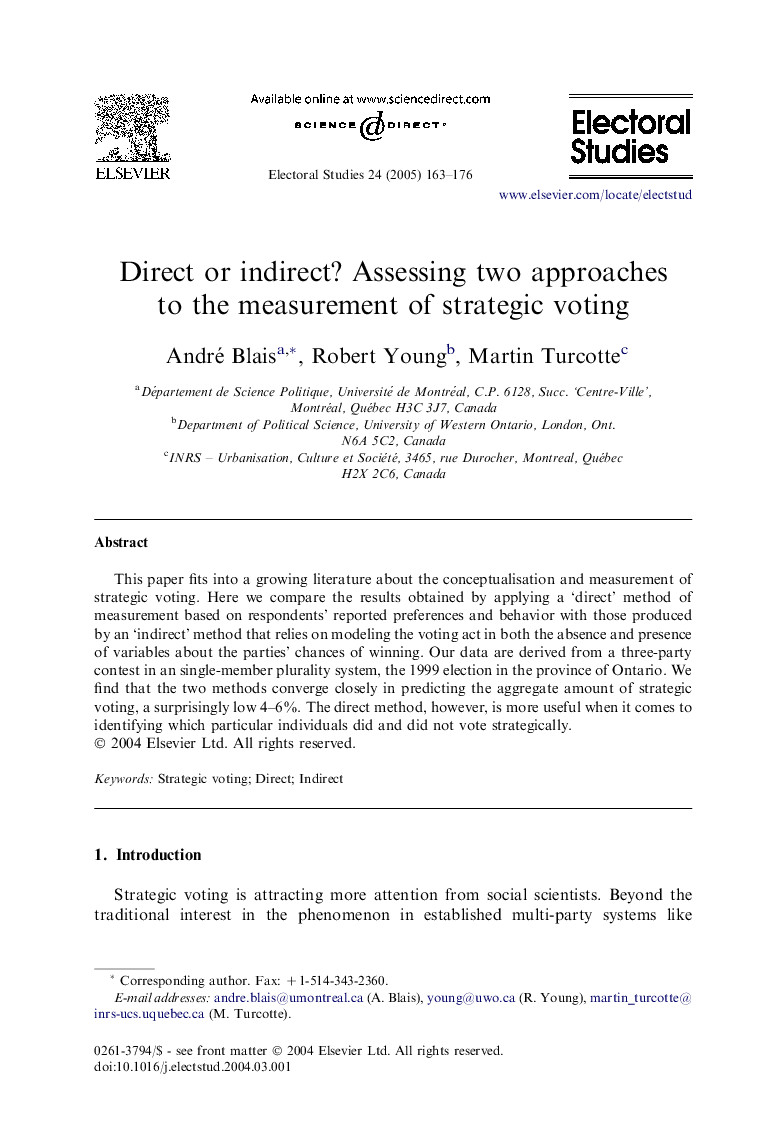| Article ID | Journal | Published Year | Pages | File Type |
|---|---|---|---|---|
| 10504054 | Electoral Studies | 2005 | 14 Pages |
Abstract
This paper fits into a growing literature about the conceptualisation and measurement of strategic voting. Here we compare the results obtained by applying a 'direct' method of measurement based on respondents' reported preferences and behavior with those produced by an 'indirect' method that relies on modeling the voting act in both the absence and presence of variables about the parties' chances of winning. Our data are derived from a three-party contest in an single-member plurality system, the 1999 election in the province of Ontario. We find that the two methods converge closely in predicting the aggregate amount of strategic voting, a surprisingly low 4-6%. The direct method, however, is more useful when it comes to identifying which particular individuals did and did not vote strategically.
Keywords
Related Topics
Social Sciences and Humanities
Social Sciences
Geography, Planning and Development
Authors
André Blais, Robert Young, Martin Turcotte,
